 Last weekend they left us at home and spent the weekend trailing around Cape Point. Lucy had booked the Smitswinkel tented camp, which is part of the Hoerikwaggo Trail, as a warm up for the Otter Trail in two weeks time, and a time to "test drive" their backpacks. The tented camp is in those trees in the background of this photo taken from the entrance to Cape Point looking back towards Swartkops Peak.
Last weekend they left us at home and spent the weekend trailing around Cape Point. Lucy had booked the Smitswinkel tented camp, which is part of the Hoerikwaggo Trail, as a warm up for the Otter Trail in two weeks time, and a time to "test drive" their backpacks. The tented camp is in those trees in the background of this photo taken from the entrance to Cape Point looking back towards Swartkops Peak.Here is a short account of the trail from the Foodlady.
 The start of the Trail: Cape Point - with a sculpture of the famous baboons. Sorry Coco, I know how much you love chasing baboons!
The start of the Trail: Cape Point - with a sculpture of the famous baboons. Sorry Coco, I know how much you love chasing baboons! Setting out - 17 km to go!
Setting out - 17 km to go!  Pauline, Kate, Sue, Gareth, Jonathan, Lucy and Richard. Also on the trail: Stephen, Paul and me.
Pauline, Kate, Sue, Gareth, Jonathan, Lucy and Richard. Also on the trail: Stephen, Paul and me. From Cape Point we set out along the east coast, heading northwards.
From Cape Point we set out along the east coast, heading northwards. The trail is well-marked - even when it crosses the tarred road.
The trail is well-marked - even when it crosses the tarred road. Autumn Pypie (Gladiolus brevifolius).
Autumn Pypie (Gladiolus brevifolius). The "fishing boat" out there is the Ocearch boat which has caused a furore over the granting of a permit by the Dept of Environmental Affairs to the researchers and film-makers to chum for sharks, much against the wishes of most Capetonians. Opposition to chumming has intensified after a young surfer was killed by a shark in False Bay a couple of days ago.
The "fishing boat" out there is the Ocearch boat which has caused a furore over the granting of a permit by the Dept of Environmental Affairs to the researchers and film-makers to chum for sharks, much against the wishes of most Capetonians. Opposition to chumming has intensified after a young surfer was killed by a shark in False Bay a couple of days ago. Hikers heading down the trail. The weather holding out, but looking a bit ominous.
Hikers heading down the trail. The weather holding out, but looking a bit ominous. Common Diamondeyes (Staavia radiata).
Common Diamondeyes (Staavia radiata). Buds starting to form on the Golden Spiderhead (Serruria villosa).
Buds starting to form on the Golden Spiderhead (Serruria villosa). In the misty distance are the shark fin-like peaks of Paul se Berg and Judas Peak looking towards Smitswinkel.
In the misty distance are the shark fin-like peaks of Paul se Berg and Judas Peak looking towards Smitswinkel. An Ostrich egg, just lying in the path. According to the book Between two shores: Fauna and flora of the Cape of Good Hope by Michael Fraser and Liz McMahon (David Philip 1994) these ostriches were introduced to the reserve by one of the original farmers, John McKellar, in the mid nineteenth century.
An Ostrich egg, just lying in the path. According to the book Between two shores: Fauna and flora of the Cape of Good Hope by Michael Fraser and Liz McMahon (David Philip 1994) these ostriches were introduced to the reserve by one of the original farmers, John McKellar, in the mid nineteenth century. There were not all that many flowers out at this time of year compared to our last visit in September, but still, lots and lots - too many to include in one blog. This is a small and scruffy plant called Selago levynsiae.
There were not all that many flowers out at this time of year compared to our last visit in September, but still, lots and lots - too many to include in one blog. This is a small and scruffy plant called Selago levynsiae. Tea break and an opportunity to try out our Otter Trail gear. This is our cute little kettle and Stephen's trusty old gas stove that still works like a bomb, er well no actually not at all like a bomb. Like a gas stove should. No explosions.
Tea break and an opportunity to try out our Otter Trail gear. This is our cute little kettle and Stephen's trusty old gas stove that still works like a bomb, er well no actually not at all like a bomb. Like a gas stove should. No explosions. Richard trying out his new stove while Lucy looks on.
Richard trying out his new stove while Lucy looks on. Great pouring action too.
Great pouring action too. In the distance is Paul and Pauline brewing tea too. And Sue talking to Kate and Lucy. Kate, for once, is sitting down and not performing one of her trademark "happy dances".
In the distance is Paul and Pauline brewing tea too. And Sue talking to Kate and Lucy. Kate, for once, is sitting down and not performing one of her trademark "happy dances". A little white erica that looks a bit like a pale version of Erica pulchella, growing in the middle of the trail.
A little white erica that looks a bit like a pale version of Erica pulchella, growing in the middle of the trail. And a rather odd, rather dead, legless skink, the Cape Legless Skink (Acontias meleagris).
And a rather odd, rather dead, legless skink, the Cape Legless Skink (Acontias meleagris). We arrived at the Information Centre (that used to be the restaurant with the most divine blueberry pies in the world when I was a kid) just as it started to threaten to rain. Here is the avant-garde: Stephen, Richard, Jonathan and Gareth. (The others were donning raincoats.)
We arrived at the Information Centre (that used to be the restaurant with the most divine blueberry pies in the world when I was a kid) just as it started to threaten to rain. Here is the avant-garde: Stephen, Richard, Jonathan and Gareth. (The others were donning raincoats.) Onwards to Kanonkop - with the visitors centre in the background. It is an old farmhouse, belonging to a George Smith, and was once visited by no less than CHARLES DARWIN himself! Sadly Darwin didn't think much of the fynbos here, and dismissed it rather grumpily as being worthless! It must have been a hot and windy day I think.
Onwards to Kanonkop - with the visitors centre in the background. It is an old farmhouse, belonging to a George Smith, and was once visited by no less than CHARLES DARWIN himself! Sadly Darwin didn't think much of the fynbos here, and dismissed it rather grumpily as being worthless! It must have been a hot and windy day I think. Weather closing in some more. Cape Point receeeeeeeding into the mist. The Da Gama cross sticking out.
Weather closing in some more. Cape Point receeeeeeeding into the mist. The Da Gama cross sticking out. Passing politely by some baboons looking a bit wet and sorry for themselves. Lucky you were not here Coco!
Passing politely by some baboons looking a bit wet and sorry for themselves. Lucky you were not here Coco! Lunch at Kanonkop when it stopped raining. Trying out trail food.
Lunch at Kanonkop when it stopped raining. Trying out trail food. Some less successful than others!
Some less successful than others! More baboon encounters on Paul se Berg. All rather polite, even indifferent. As is should be. Cape Point far in the distance now.
More baboon encounters on Paul se Berg. All rather polite, even indifferent. As is should be. Cape Point far in the distance now. Balancing baboon. Obviously baboons do not suffer from vertigo.
Balancing baboon. Obviously baboons do not suffer from vertigo.
Smitswinkel Bay. Looking northwards. Getting there.
 Common Pagoda (Mimetes cucullatus) in the restios.
Common Pagoda (Mimetes cucullatus) in the restios. These dried Dilatris flower heads looked like snowflake Christmas decorations.
These dried Dilatris flower heads looked like snowflake Christmas decorations. And after much lifting and fetching of cars, and walking along the smelly tarred road, we finally got into the tented camp. (Happy dance from Kate.) Not a very slick operation - they really need to have a proper walking path all the way to the camp. At present you have to walk down the tarred road smelling all the car's petrol fumes as they queue up to get into the main gate of the park. But what a delightful camp!
And after much lifting and fetching of cars, and walking along the smelly tarred road, we finally got into the tented camp. (Happy dance from Kate.) Not a very slick operation - they really need to have a proper walking path all the way to the camp. At present you have to walk down the tarred road smelling all the car's petrol fumes as they queue up to get into the main gate of the park. But what a delightful camp! Each two-bed tent has its own kitchenette, and is situated looking out onto the mountain and completely private from the one next door.
Each two-bed tent has its own kitchenette, and is situated looking out onto the mountain and completely private from the one next door. Inside the tent - each one has a loo and shower and basin as well. Camping in total luxury! Here the Otter Trail preparations ended and we sank into luxury and hot showers. Our tent was called "Grysbok".
Inside the tent - each one has a loo and shower and basin as well. Camping in total luxury! Here the Otter Trail preparations ended and we sank into luxury and hot showers. Our tent was called "Grysbok". The camp has a well designed communal cooking and eating hut complete with indoor braai for cold, wet or windy weather, and fantastic outdoor braai for those perfect days that Cape Town sometimes has. (But not today!)
The camp has a well designed communal cooking and eating hut complete with indoor braai for cold, wet or windy weather, and fantastic outdoor braai for those perfect days that Cape Town sometimes has. (But not today!) Trying out our Back Country Cuisine packet of dehydrated "Roast lamb and vegetables".
Trying out our Back Country Cuisine packet of dehydrated "Roast lamb and vegetables". and Sue and Kate's wine, and a braai, and Lucy's grand salad, and Pauline's dips and crackers, and beer, and chips, and butternut, and cheesecake ... Cheers Sue!
and Sue and Kate's wine, and a braai, and Lucy's grand salad, and Pauline's dips and crackers, and beer, and chips, and butternut, and cheesecake ... Cheers Sue! If you look carefully you can see Kate's friction penguin torch on the table.
If you look carefully you can see Kate's friction penguin torch on the table.  The lampshades are made with flowering gum nuts made from the surrounding trees. Stephen and Paul putting their stoves through their paces. (The Back Country Cuisine food was good but Paul didn't really enjoy the "babote" but then maybe these New Zealanders need to learn how to spell it first before they can cook it and freeze-dry it.)
The lampshades are made with flowering gum nuts made from the surrounding trees. Stephen and Paul putting their stoves through their paces. (The Back Country Cuisine food was good but Paul didn't really enjoy the "babote" but then maybe these New Zealanders need to learn how to spell it first before they can cook it and freeze-dry it.) What we definitely won't be seeing on the Otter Trail! Lucy's salad.
What we definitely won't be seeing on the Otter Trail! Lucy's salad. The next morning, after a very comfy, but rather windy night, it was still raining. After breakfast some of us headed back into the park, but others departed for home.
The next morning, after a very comfy, but rather windy night, it was still raining. After breakfast some of us headed back into the park, but others departed for home. The sun did come out for a bit, so we decided to do this 3 hour walk at Gifkommetjie, which turned out to be about 1 and a 1/2 hours, on the west coast of the park.
The sun did come out for a bit, so we decided to do this 3 hour walk at Gifkommetjie, which turned out to be about 1 and a 1/2 hours, on the west coast of the park. Looking hopeful. Lucy, I noticed, was the only one keen to carry on "trying out" her full pack. The rest of us opted for daypacks.
Looking hopeful. Lucy, I noticed, was the only one keen to carry on "trying out" her full pack. The rest of us opted for daypacks. The path went steeply down to the beach, through some wonderful old milkwoods.
The path went steeply down to the beach, through some wonderful old milkwoods. Medusa's Head (Euphorbia caput-medusae) on the beach.
Medusa's Head (Euphorbia caput-medusae) on the beach. Then the heavens opened! But luckily not for long. Just long enough to try out our raingear again.
Then the heavens opened! But luckily not for long. Just long enough to try out our raingear again. Looking northwards, this time up the west coast of the park. Somewhere out there is the wreck of the Phyllisia that sank in 1968.
Looking northwards, this time up the west coast of the park. Somewhere out there is the wreck of the Phyllisia that sank in 1968. Back over the ridge and home. A really wonderful weekend. Thank you Lucy for organizing it! Look forward to the Otter.
Back over the ridge and home. A really wonderful weekend. Thank you Lucy for organizing it! Look forward to the Otter.


























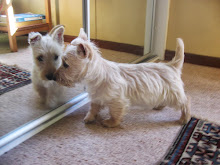


















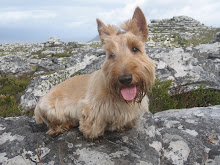
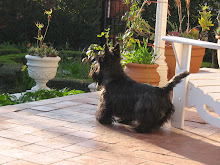






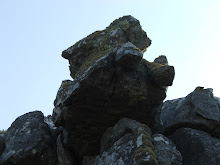





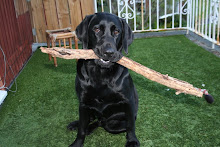





















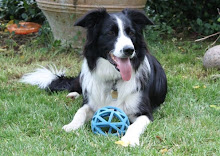

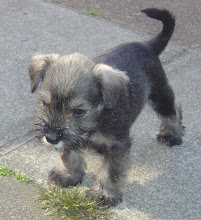













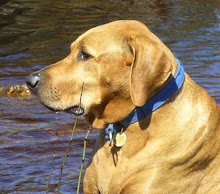
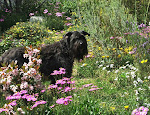



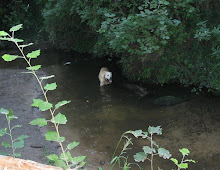



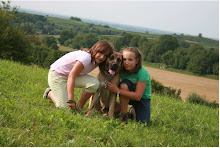

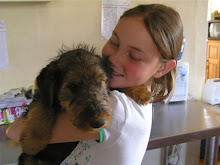








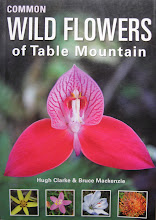


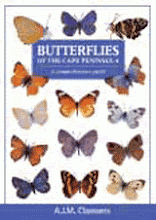






good pics, thanks
ReplyDelete